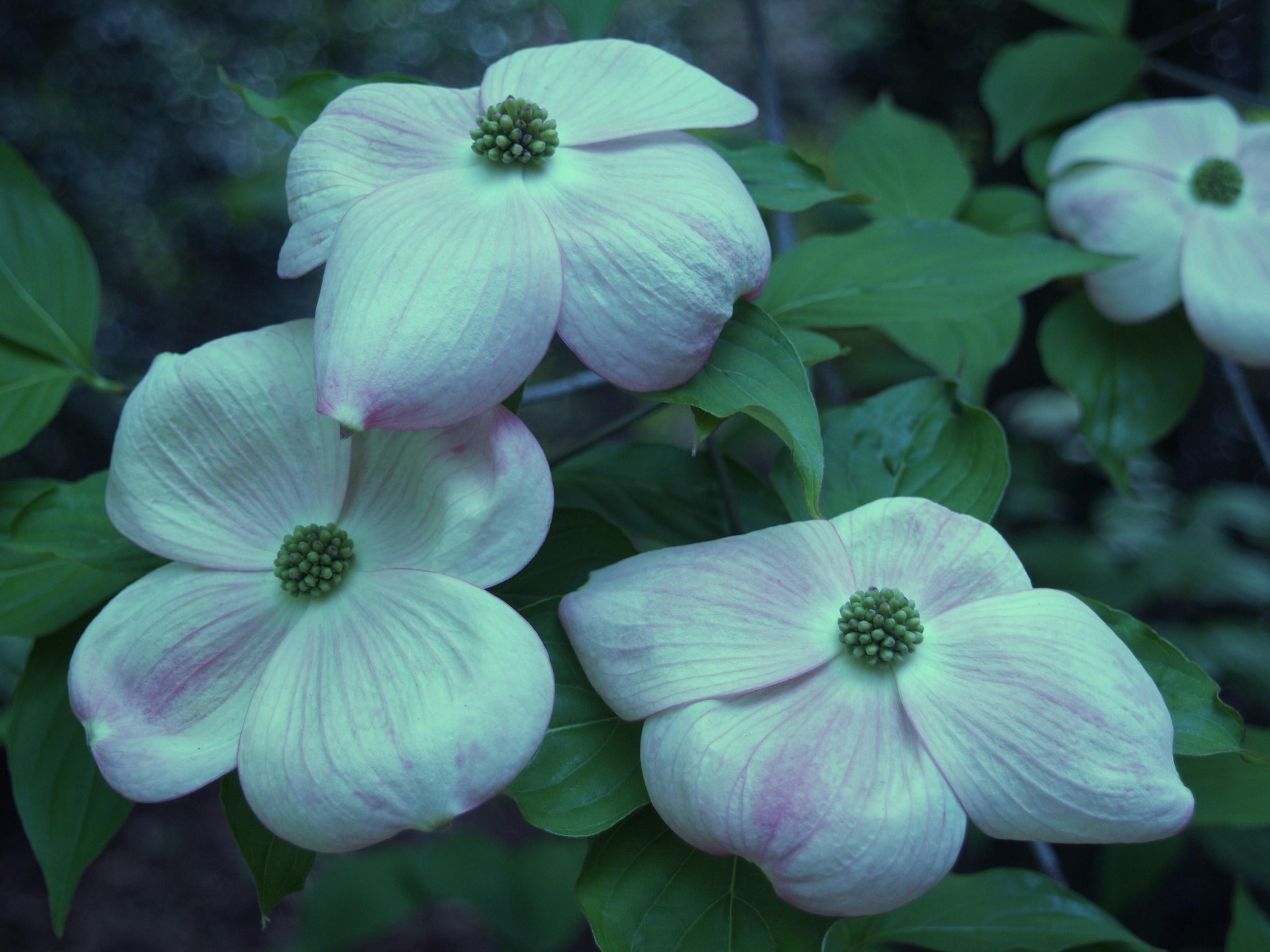With the native dogwoods (Cornus florida) fading after a splendid, extended bloom due to cool, early spring temperatures, the next wave of dogwoods is poised to extend the period of flowering that will not end until the middle of June. While several native dogwoods joined redbuds for a glorious month of April bloom, there will be many more flowers in this next group of dogwoods.

There are far too many plants in this garden to have a personal connection to each, but when a variegated leaf ‘Celestial Shadow’ dogwood (above) was lost in overly damp ground several years ago, I had to have another. Every glance at the tree reminds me of a tour of two legendary Tennessee nurseries (Tennessee Valley and Don Shadow nurseries) from the late 1970’s. Hoskins Shadow, the aging father of Don and Fred, entertained us as we rambled down two lane county roads between nurseries managed by his sons. This was my first exposure to tree growing operations, and a memorable start to my career. Admittedly, as a youngster at the time, I remember Don’s collection of exotic animals more than the trees. ‘Celestial Shadow’ is a second generation hybrid named after Don Shadow. It’s a fast and disease resistant grower, and a tree that brings back fond memories of screeching to a halt at the few stop signs along a dusty, rural Tennessee highway.

Long ago, I was aware of the Pagoda dogwood (Cornus alternifolia, above), but until recent years I was skeptical that it belonged as an area native. While hiking a section of the Appalachian Trail I discovered one, then another flowering near the Byrd’s Nest Shelter #3. Though I question the native designation of a tree found at three thousand feet elevation to gardens on lower ground, immediately I had to have one, and was fortunate to find two that I purchased without thinking for a moment about where either could be planted. I’m very pleased that good homes were found for both in the shaded upper, rear garden.

Happy with this addition, I still had the urge to add a variegated Pagoda dogwood. After failing to find a green and white variegated dogwood, I settled for the yellow-green variegated Golden Shadows (above). Yes, it’s small, and for a while I worried that it would be lost under exuberant foliage nearby, but it has grown just enough to rise above the chaos. It will be another few years before it flowers, and another couple until it makes much of a show, but I’m encouraged.

A hint of pink is seen in the flowers of the hybrid ‘Stellar Pink’ dogwood (above). While the intensity of color varies, I think once in twenty years the flowers have been notably pink. Otherwise, it’s white with a slight pink blush, though I’ve see the tree in its deepest pink in the cooler Pacific Northwest. But, even in warmer eastern gardens, the tree is vigorous and disease resistant, though unfortunately it prefers more sunlight than the increasing shade of the side garden.

When the hybrid ‘Venus’ dogwood (above) was introduced I figured its huge flowers would take over the dogwood market, but perhaps the nearly garish blooms are too much of a good thing. But, not in this garden. One in half sun has grown and flowers robustly, with the other that’s more shaded growing only half its size and with only half, but still plenty of flowers. This is a big, upright growing dogwood that can take the heat, and with no worries about any of the diseases of the native.

A variety of red and yellow twigged dogwoods (Cornus servicea ‘Flamiramea’, above) occupy the damp, lower, rear garden. While most dogwoods will not tolerate dampness, the shrub dogwoods thrive in moist soil. My color blindness prevents me from fully appreciating the red twig types, but the yellow stands out in a prominent setting.

Predictably, when a ‘Wolf Eyes’ dogwood (Cornus kousa ‘Wolf Eyes’, above) was lost in the lower, rear garden along with ‘Celestial Shadow’ several years ago with rainfall thirty inches above our average, I was determined to plant another. Fortunately, one of substantial size, nearly the spread of the one that was lost, was found quickly. The variegated leaf of ‘Wolf Eyes’ is nearly identical to Samaritan, but in this garden the ‘Wolf’ grows short and stubby while Samaritan is fast growing and upright. Both are treasured against the dark background of hollies.

In case I haven’t moaned and groaned enough about dogwoods lost, a pink flowered ‘Satomi’ dogwood was chopped out a few years ago as it struggled in the dry shade beneath a Bigleaf magnolia (Magnolia macrophylla). While the native dogwood prefers part shade, the kousa dogwoods tolerate only light shade. Similar to Stellar Pink, the flowers rarely showed more than a trace of pink. A recent planting, ‘Scarlet Fire’ (above) promises better color, and in nearly full sun I hope for the best.

The newest dogwood addition is ‘Elizabeth Lustgarten’, a weeping kousa. No doubt, it will grow too large to fit with its neighbors, but I’ll figure this out as it grows, just like many others.

Two other kousa dogwoods are notable for their abundant blooms and large red fruits that are immediately snatched by birds upon ripening. Again, one in shade flowers more sparsely, but both grow without a care, and notably without leaf spotting and other maladies that threaten the native dogwoods. Still, I’ll take one (or more) of each.